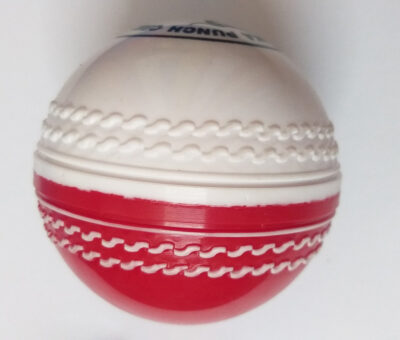In T20 cricket matches, a white leather cricket ball is typically used. The white ball is used to improve visibility under floodlights and to differentiate it from the red ball used in longer formats of the game, such as Test matches.
The white ball used in T20 cricket is similar in construction to the red ball used in Test matches. It consists of a leather outer shell with stitching and a cork core. However, the white ball is coated with a layer of white paint or synthetic material to enhance visibility.
The white ball tends to swing less than the red ball, and it is generally easier to spot and track during day-night matches. This makes it more suitable for the fast-paced and high-scoring nature of T20 cricket, where quick scoring and excitement are key elements of the game.
- Construction: The white cricket ball used in T20 matches follows a similar construction as the red ball. It consists of a leather outer casing, typically made from cowhide, and is stitched together with a strong thread. Inside the ball, there is a cork core, which provides the weight and bounce.
- Coating: To enhance visibility, the white cricket ball is coated with a layer of white paint or a synthetic material. This coating helps the ball stand out against the field and sky, making it easier for players and spectators to track its movement.
- Seam: The seam of the white ball is also made of stitching, similar to the red ball. The seam plays a crucial role in the ball’s behavior, affecting its swing, seam movement, and grip for spin bowlers.
- Visibility: The white ball is designed to be highly visible, especially under floodlights used in day-night matches. It allows players and viewers to track the ball more easily in different lighting conditions.
- Durability: The durability of white cricket balls can vary depending on the brand and quality. Since T20 matches are fast-paced and high-scoring, the ball is often subjected to more aggressive hitting and can wear down faster than in longer formats. Therefore, manufacturers strive to produce white balls that can withstand the demands of T20 cricket.
- Evolution: The white cricket ball has undergone some modifications over the years to improve its visibility, durability, and performance. Manufacturers continue to experiment with different materials, coatings, and designs to enhance the white ball’s characteristics and make it more suitable for T20 cricket.
Overall, the white cricket ball used in T20 matches combines the core principles of a traditional cricket ball with modifications to enhance visibility and suit the unique demands of the fast-paced T20 format.



